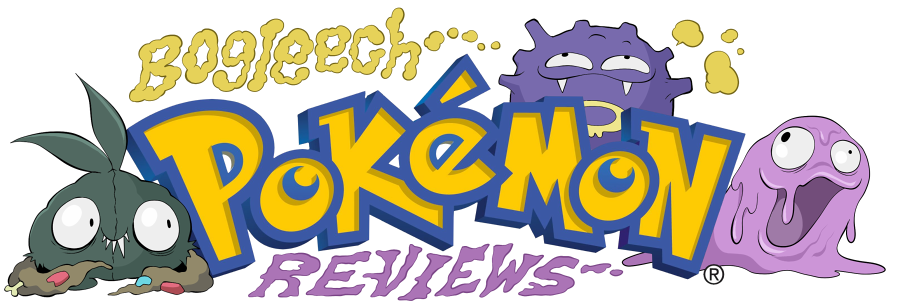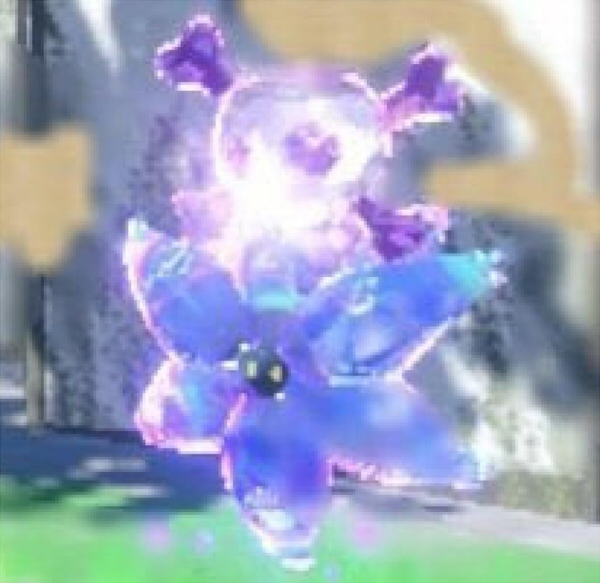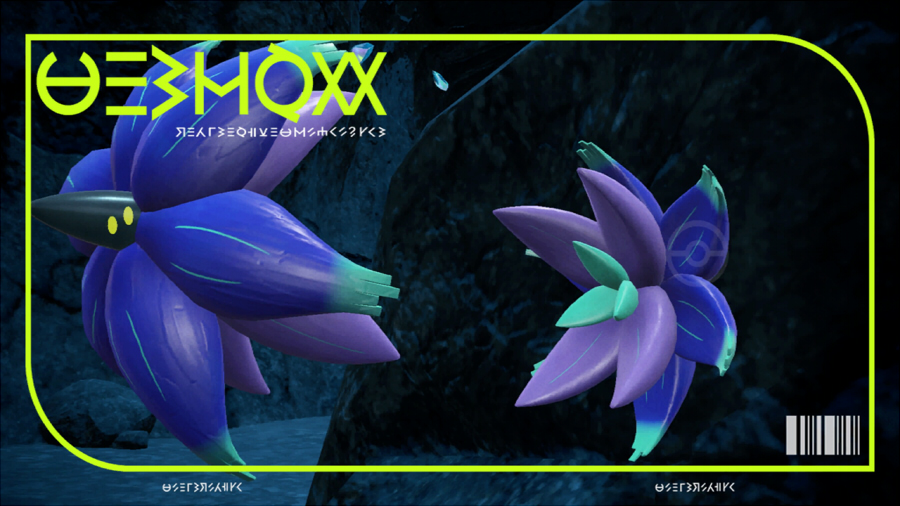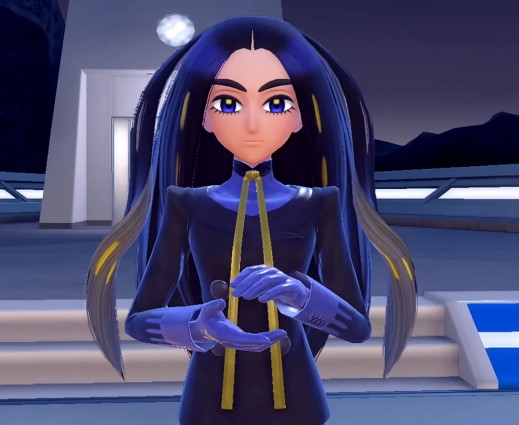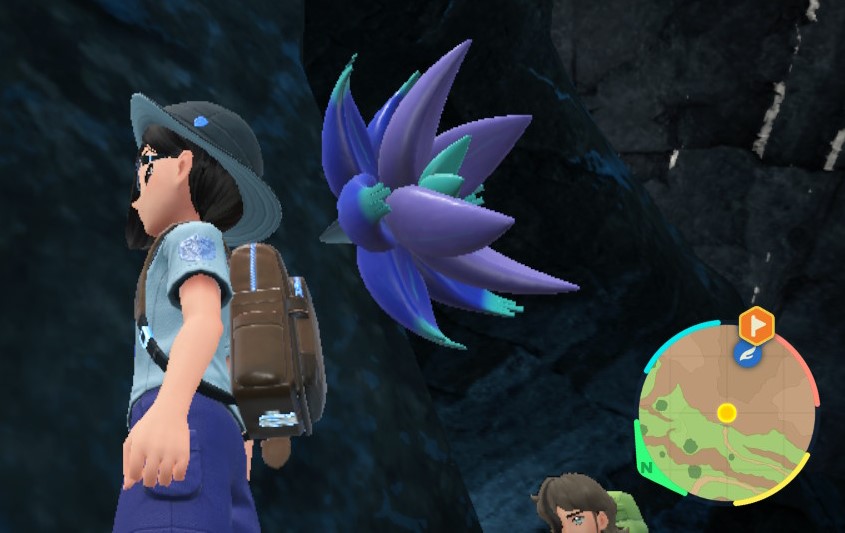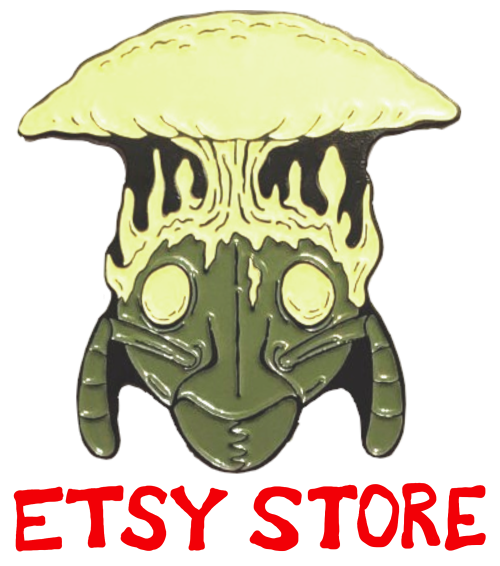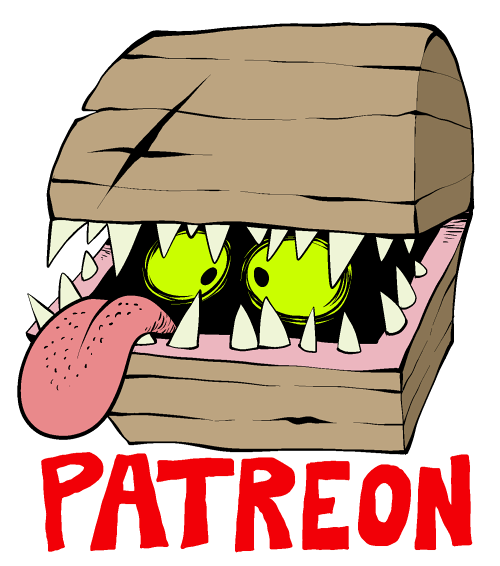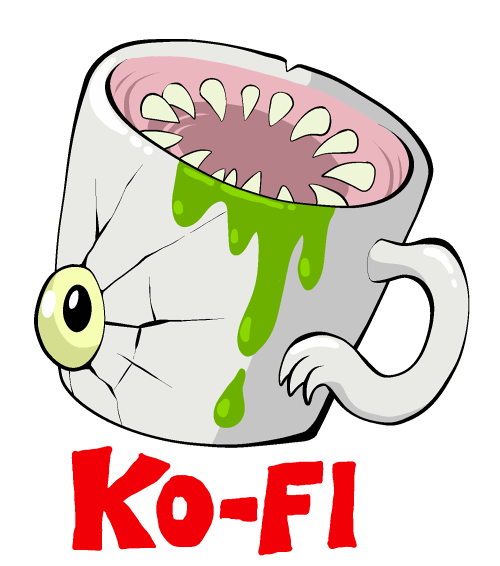

Glimmet and Glimmora
We're already at another BIG DEAL addition in my book, and I knew it was one of my new favorite things ever from the moment this blurry screenshot was leaked with little to no context:
EVEN THEN, hardly anybody was talking about it. The typing meant this wasn't actually a flower or a plant at all, so what on earth was it supposed to represent?! The most obvious answer would be "toxic minerals," but I wasn't entirely sure if they'd go there or not. I was prepared to love it no matter what it was supposed to be, but they already avoid overt discussion of radiation in this series, and toxic minerals can be almost as volatile (never mind that some minerals are, of course, also dangerously radioactive.) Toxic minerals are a much more nameable kind of poison than the broad "chemical sludge" of Muk or "smog" of Weezing, extending to things as gravely terrible as asbestos dust. They wouldn't make a Pokemon that can give you mesothelioma, would they?
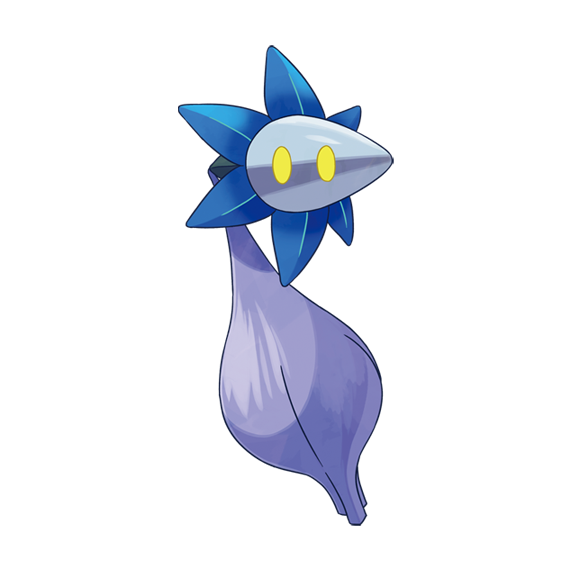
Well, they apparently would, and it's even more precious and charming than I ever expected. The unevolved stage is Glimmet, a creature that "absorbs nutrients from cave walls" and crystallizes poisonous compounds to form its flower-like body. Its anatomically fascinating head consists of a transparent, bullet-shaped cone with six small, blue flower petals encircling its base, while its eyes are two yellow lights in a dark hole at their center, as you know one of the cutest and most charming eye designs peering out from the back of the glassy, conical shield. Trailing behind the head is a pale lavender (almost white) plantlike bulb trailing on a thin stalk, and the whole thing just hovers through the air.
The Pokemon's wonderfully unique face appears to draw some inspiration from the flowers of nightshade, including this merely sickening "bittersweet" nightshade and the more infamous, visually similar "deadly" nightshade, Atropa belladonna. The clear conical shield over the eyes, however, is an original idea I've actually never seen before in a creature design, though I'm sure it has to have been done somewhere.
And, okay, it's not asbestos, even if its bulb looks an awful lot like asbestos and a number of other fuzzy, fibrous minerals that can ruin your lungs.
Glimmet isn't directly tied to any one flavor of deadly stone, or at least none from our world (more on that shortly), but its design is surely in reference to chalcanthite, literally meaning "copper flower" after its spectacularly ocean blue crystals. It's a usable copper ore, but as a sulfate, it's soluble in water and can even be dissolved by ambient humidity. Your body is notably made out of a lot of humidity, and the humidity making up your flesh is not supposed to have too much copper floating around in it. The symptoms of copper poisoning range from nausea to coma to corpse, and a potentially lethal dose of chalcanthite can be as little as a couple of grams.
I realize that this is a media franchise in which the consequences of pissing off a giant metal bird made of knives are rarely more severe than having to go "yeowtch!" and nobody would think twice about leaving children unattended with a thing made of sentient magma, but Glimmet is technically something that, pardon the graphic visual, can make you die shitting blood.
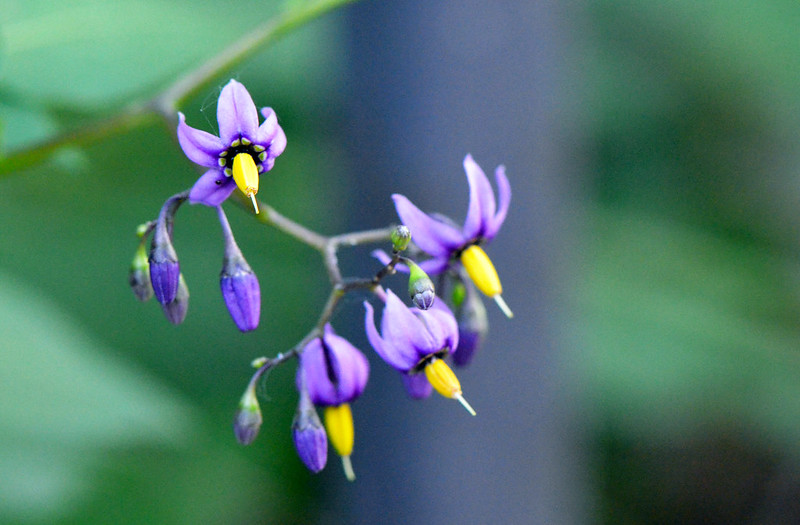
Photo by Joanna Gilkeson/USFWS
The Pokemon's wonderfully unique face appears to draw some inspiration from the flowers of nightshade, including this merely sickening "bittersweet" nightshade and the more infamous, visually similar "deadly" nightshade, Atropa belladonna. The clear conical shield over the eyes, however, is an original idea I've actually never seen before in a creature design, though I'm sure it has to have been done somewhere.
And, okay, it's not asbestos, even if its bulb looks an awful lot like asbestos and a number of other fuzzy, fibrous minerals that can ruin your lungs.
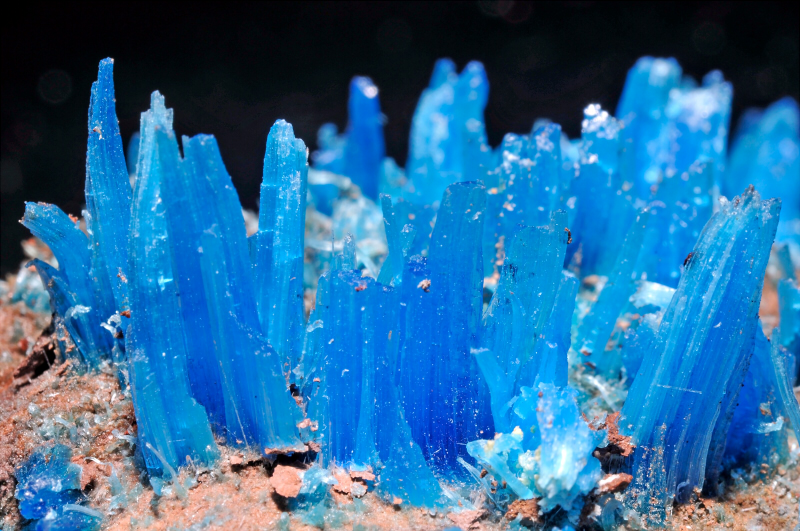
Photo by Gery Parent
Glimmet isn't directly tied to any one flavor of deadly stone, or at least none from our world (more on that shortly), but its design is surely in reference to chalcanthite, literally meaning "copper flower" after its spectacularly ocean blue crystals. It's a usable copper ore, but as a sulfate, it's soluble in water and can even be dissolved by ambient humidity. Your body is notably made out of a lot of humidity, and the humidity making up your flesh is not supposed to have too much copper floating around in it. The symptoms of copper poisoning range from nausea to coma to corpse, and a potentially lethal dose of chalcanthite can be as little as a couple of grams.
I realize that this is a media franchise in which the consequences of pissing off a giant metal bird made of knives are rarely more severe than having to go "yeowtch!" and nobody would think twice about leaving children unattended with a thing made of sentient magma, but Glimmet is technically something that, pardon the graphic visual, can make you die shitting blood.
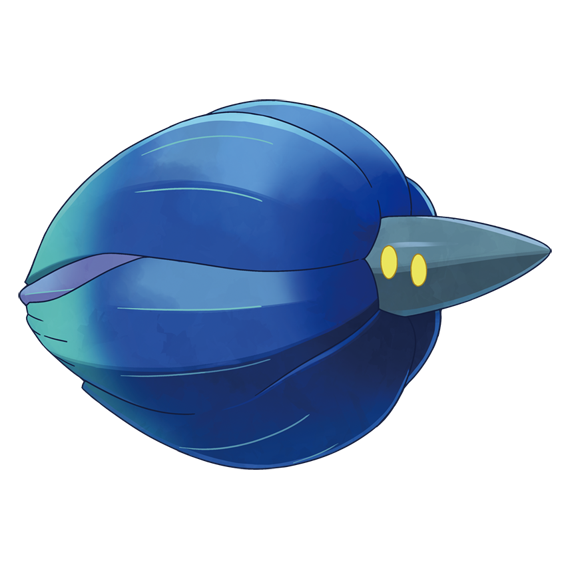
So then we have Glimmora, the thing HARDLY ANYBODY CARED ABOUT until the games actually dropped and suddenly everybody saw that it was rad and awesome, which should have been obvious as soon as anybody knew there was some kind of giant hovering ghostly-eyed pinwheel made of poisonous rocks. It retains the the very same adorable eyes and central cone it had as Glimmet, but the gorgeous blue petals are now relatively huge, and can even close up into a weird sort of egg shape, which is cool, but it wasn't necessarily the best pose to go with for the main art.
Glimmora's six petals are usually flaring open, showing off their cool "broken" looking angular tips, where that intense blue fades to a lighter seafoam green. The "bulb" that was Glimmet's "body" now splits into four thicker petals nested in the larger blue blossom, and three greener, smaller petals are nested in these. The three layers make for a really nice progression of cool shapes and colors, overall kind of resembling a big giant lotus flower. While usually hovering face-first, it flips around to unleash special attacks from within its petals, and for physical attacks, it actually lands on its pointed "nose" to spin around like a deadly top!
Of course it has its own signature move, Mortal Spin, a damaging attack that isn't exceptionally powerful but will both poison the opponent and clear the battlefield of hazards, a fairly coveted mechanic in competitive play. It's also the first Pokemon since Salazzle that can have the corrosion ability, allowing it to even poison steel types, but it still has its own brand new ability, toxic debris, which automatically scatters poison spikes when struck by a physical attack! As an aside, I'll be surprised if Garbodor never gets this as a Hidden Ability, since it seems like an effect it was born to have.
Glimmora's Japanese name is Kiraflor, with "kira" being a "glittery" or "sparkly" sound effect, but it's pronounced the same in Japanese as killer, hence its rich tradition as an anime character name. I'm not sure a Pokemon's name has ever included a reference to killing before, has it?
There are also two in-game implementations of Glimmora that hint at some deeper significance than just an odd-looking rock type; it's a signature Pokemon of the enigmatic regional champion, Geeta, and it can only be found wild in the deep caves of Area Zero, an eerie post-game environment located in an ancient impact crater where that "terastal" phenomenon was first documented. In addition to Glimmora roaming freely in these caverns, others can be seen attached by their face cones to the cave walls, deathly still. The Pokedex says that the structure of their crystal petals closely resemble that of tera jewels, so did Area Zero and tera energy influence the evolution of these organisms, or is it possible they even originate from the same alien realm, perhaps arriving with the original meteor?
Maybe we'll learn more about Glimmet and Glimmora from the upcoming DLC expansion or even a future anime episode, but this series loves its unanswered questions, and that's fine too. Wherever they came from, they joined my personal must-have favorites pretty much before I even knew what they really looked like. I was already going to love any poison type with its eyes in a black void, let alone with such an alien shape to the rest of its body. I've always adored radiating flower-shaped creatures that aren't actually even plants, which comes up just every so often in media (especially from video games) and delightfully quite a bit often in real life, Echinodermata and Cnidaria being the champions of this since about 400-500 million years before flowers ever actually existed.
This line also continues a tradition we touched upon in Grafaiai's review; that EVERY generation has expanded the poison type into one or more new categories of hazardous material. Among others, the type now includes creatures themed around sludge, smog, digestive enzymes, stinking gas, toxic algae, household trash, glue, battery acid, paint, diesel fuel, and now a sulfate mineral. Not counting regional variants on any of these Pokemon, none of these motifs have ever been repeated. The only other type to flex its conceptual goalposts nearly this often may in fact be the rock type, so Glimmora diversifies two historically diverse types at once, though rock Pokemon can still get a little more redundant than my perfect poison babies; even when it comes to the most obvious venomous animals or noxious flora, the type has heavily avoided reusing a base concept since way, way back when Dustox and Seviper stepped on Venomoth and Arbok's toes.
There are only so many ways you can define "fire," to be fair. There are only so many reasons a creature might be associated with "ice." You can accurately guess what the majority of fighting types are going to do to you from the name alone. But when it comes to poisonous Pokemon, they really show off how many, many creative ways there are, excuse me again, to die shitting blood.
Of course it has its own signature move, Mortal Spin, a damaging attack that isn't exceptionally powerful but will both poison the opponent and clear the battlefield of hazards, a fairly coveted mechanic in competitive play. It's also the first Pokemon since Salazzle that can have the corrosion ability, allowing it to even poison steel types, but it still has its own brand new ability, toxic debris, which automatically scatters poison spikes when struck by a physical attack! As an aside, I'll be surprised if Garbodor never gets this as a Hidden Ability, since it seems like an effect it was born to have.
Glimmora's Japanese name is Kiraflor, with "kira" being a "glittery" or "sparkly" sound effect, but it's pronounced the same in Japanese as killer, hence its rich tradition as an anime character name. I'm not sure a Pokemon's name has ever included a reference to killing before, has it?
Maybe we'll learn more about Glimmet and Glimmora from the upcoming DLC expansion or even a future anime episode, but this series loves its unanswered questions, and that's fine too. Wherever they came from, they joined my personal must-have favorites pretty much before I even knew what they really looked like. I was already going to love any poison type with its eyes in a black void, let alone with such an alien shape to the rest of its body. I've always adored radiating flower-shaped creatures that aren't actually even plants, which comes up just every so often in media (especially from video games) and delightfully quite a bit often in real life, Echinodermata and Cnidaria being the champions of this since about 400-500 million years before flowers ever actually existed.
There are only so many ways you can define "fire," to be fair. There are only so many reasons a creature might be associated with "ice." You can accurately guess what the majority of fighting types are going to do to you from the name alone. But when it comes to poisonous Pokemon, they really show off how many, many creative ways there are, excuse me again, to die shitting blood.

